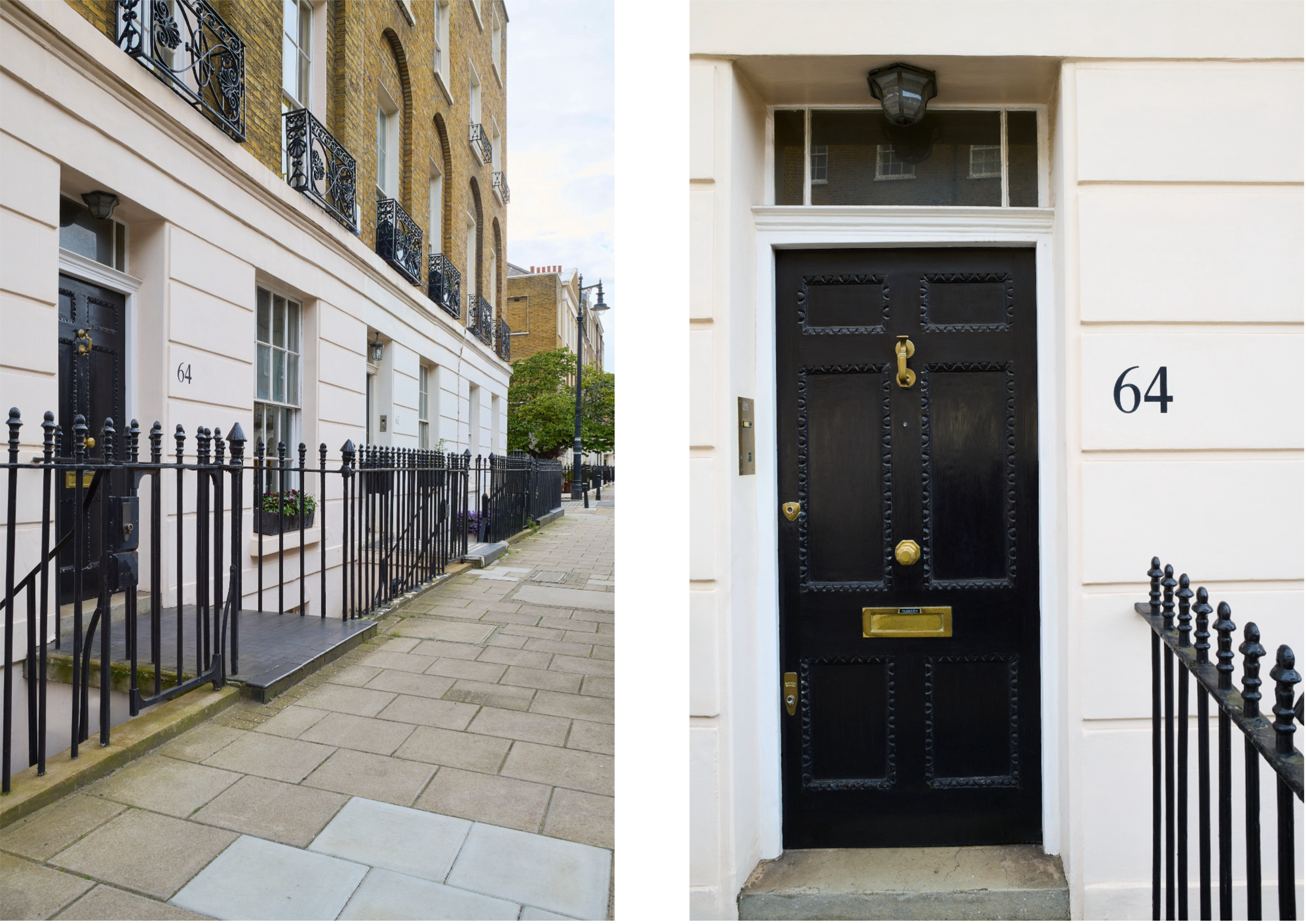





















Built in the early 19th century this beautiful Grade II listed Georgian townhouse is a perfect paradigm of classical proportions.
For more information please email Lindsay@bluebookagency.com or call 07967555545




Chapter One
Built in the early 19th century this beautiful Grade II listed Georgian townhouse is a perfect paradigm of classical proportions.
Sitting on the South West side of this eminent street, numbers 60-74 Eaton Terrace share a matching façade with white painted channelling and cast-iron railings to the ground floor, first floor windows set in round headed blind brick reveals with elegant cast iron anthemion pattern balconettes, and a slate mansard roofs.
The front door is located on the ground floor and opens into the entrance hall which leads into a double reception room, currently used as a library, featuring a marble fireplace and inbuilt bookshelves, a kitchen with large windows overlooking the back garden and a cloakroom. The dual aspect light filled drawing room is on the first floor and an features ornately carved wooden fireplace, cornicing and high ceilings. A more informal sitting room and dining room are located on the lower ground floor which includes French windows out onto the garden. A home office, storage room, and a spacious laundry/utility room with lightwell and iron stairs up to the street above are also found on the lower ground floor.
The principal bedroom suite with light filled dressing room and ensuite bathroom extends across the full second floor. The third floor consists of a further large bedroom and an adjacent bathroom.
A charming garden sits to the back of the house with a paved terrace, fountain, structure-giving shrubs and an abundance of climbing roses.




Chapter Two
Eaton Terrace is located in the heart of Belgravia within the prestigious Grosvenor Estate and Belgravia Conservation Area which is defined by its elegant rows of classical brick and stucco townhouses and attractive garden squares.
An excellent array of amenities can be found less than 5 minutes’ walk away on the pretty Elizabeth Street with its first-rate cafes, restaurants, bakers, delicatessen, bars and independent shops.
There is also a wide offering of fashionable boutique shops around the nearby hub of Sloane Square and along The King’s Road within ten minutes’ walk. Chelsea Green boasts a fantastic butcher, fishmonger, grocer and wine merchant. There is a weekly farmers’ market on Pimlico Green, and a weekly world food market on Duke of York’s off Sloane Square.
Transport Links
Sloane Square Station 0.2 miles, Knightsbridge Station 0.8 miles,
Victoria Railway Station 0.5 miles (all distances approximate)
Sloane Square is your nearest underground station, and rail services from Victoria Station are close-at-hand, as are regular bus services from Sloane Square.
Fantastic Schools
There is a choice of fantastic schools nearby including The Knightsbridge Kindergarden, Miss Daisy’s Nursery, St Peter’s Eaton Square C of E Primary School, Eaton House, Sussex House School, Francis Holland School and Westminster School.




Chapter Three
The city of London started expanding Westwards with earnest several centuries ago, with large scale building developments commencing in Covent Garden in 1630s and in Soho and St James’ in the 1670s following the Great Fire. The site now occupied by Belgravia was previously known as The Five Fields, a distinctly lawless piece of swampy countryside notoriously frequented by highwaymen, murderers, ruffians, and duellers since Tudor times.
The Five Field’s fortunes marked a turning point when ownership passed into the Grosvenor family upon the opportune marriage of Sir Thomas Grosvenor to heiress Mary Davies in 1677.
Fasting forward 150 years in the background of a housing boom following the end of the Napoleonic Wars, their descendant Robert Grosvenor, 1st Marquess of Westminster was granted by an 1826 Act of Parliament to develop the area and appointed architect Thomas Cundy and Master Builder and Developer Thomas Cubitt. Cubitt employed craftsmen directly rather than subcontracting the construction out, a revolutionary and highly risky approach at the time but one which paid off in ensuring the developments under his name were consistently of the highest quality.
Cubitt’s smart Belgravia townhouses were popular with the nobility from the get-go and were quickly snapped up by fashionable society. A further stamp of propriety was provided courtesy of Queen Victoria who, admiring the quality of Cubitt’s work, rented one of his houses nearby at 36 Belgrave Square for her mother the Duchess of Kent.

Any questions about our properties, your search or anything else, email The Blue Book or call us with any enquiry you may have and we’ll be sure to respond quickly
Office
Be the first to hear about our properties for sale and insights on the market